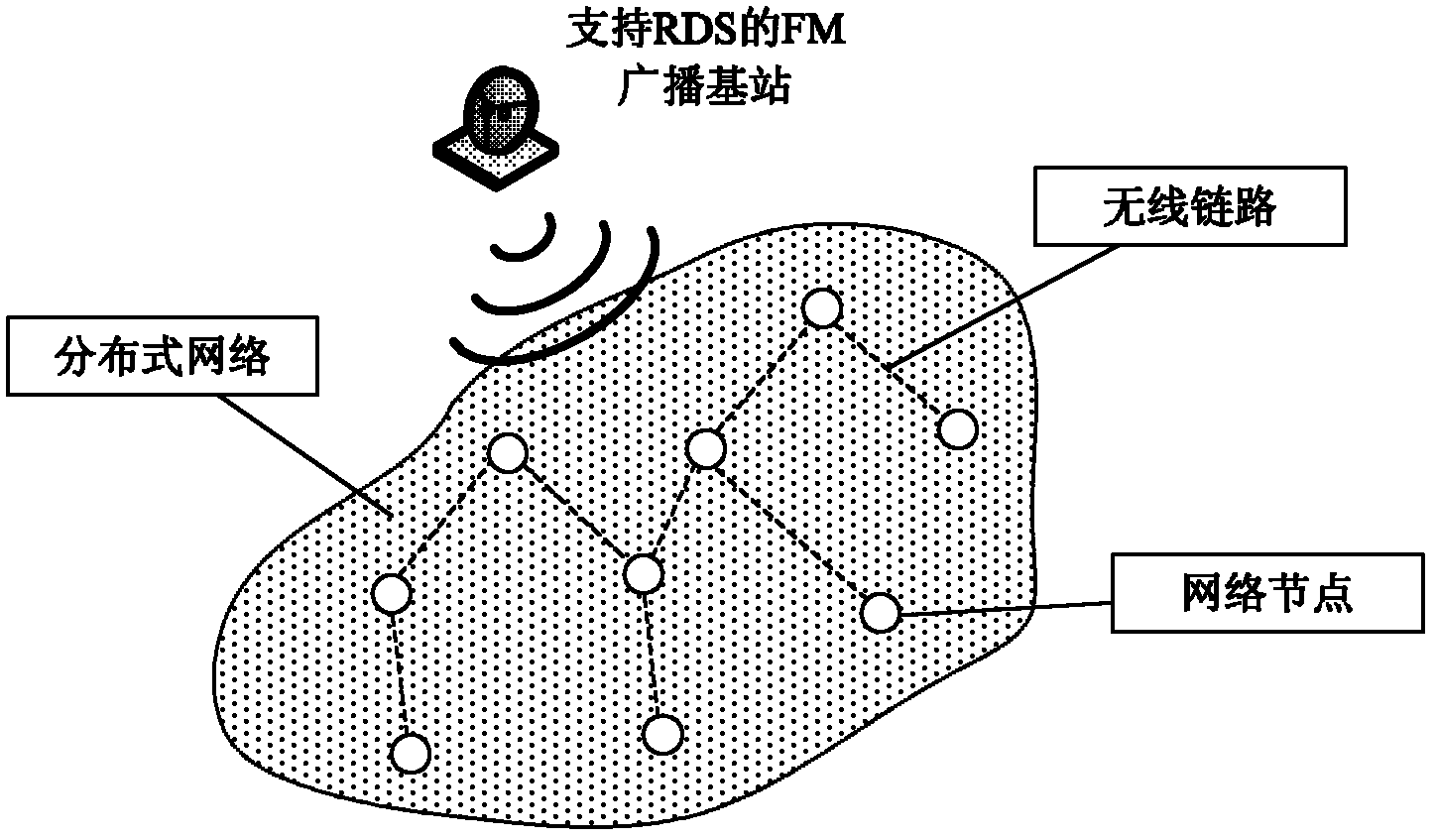Clock calibration method based on FM (Frequency Modulation) radio data system
A broadcast data system and clock calibration technology, applied in broadcast service distribution, electrical components, synchronization devices, etc., can solve the problems of occupying communication bandwidth, GPS module consumes a lot of energy, and large node energy
- Summary
- Abstract
- Description
- Claims
- Application Information
AI Technical Summary
Problems solved by technology
Method used
Image
Examples
Embodiment Construction
[0038] Such as Figure 4 , at the initial α 0 An offline estimated value can be taken. Usually, the theoretical value of the clock skew can be taken, that is, the ratio of the RDS clock frequency to the rated frequency of the crystal oscillator. In addition, when the system starts, set the initial node time c n (0)=0, then the calibration steps of the node are as follows:
[0039] Step 1: Start the node, and set the initial node clock to 0, and set the initial clock skew α 0 is the theoretical value, and the sleep cycle is T α (represented by the node clock), then the node FM chip sleeps;
[0040] Step 2: When the node clock reaches the first sleep time T 0 , the FM chip starts to receive the signal and generates an RDS pulse, and records the current node clock c at the moment when the RDS pulse is generated n (i), predict the RDS clock c of the node at the calibration time r (i), calculate the clock skew of the current period by the previous formula (2), as shown in th...
PUM
 Login to View More
Login to View More Abstract
Description
Claims
Application Information
 Login to View More
Login to View More - R&D
- Intellectual Property
- Life Sciences
- Materials
- Tech Scout
- Unparalleled Data Quality
- Higher Quality Content
- 60% Fewer Hallucinations
Browse by: Latest US Patents, China's latest patents, Technical Efficacy Thesaurus, Application Domain, Technology Topic, Popular Technical Reports.
© 2025 PatSnap. All rights reserved.Legal|Privacy policy|Modern Slavery Act Transparency Statement|Sitemap|About US| Contact US: help@patsnap.com



